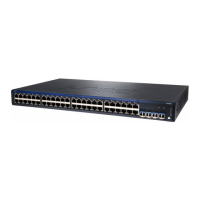The defined interface ranges can be used at places where the interface node is used in
the following configuration hierarchies:
•
forwarding-options analyzer name input egress interface
•
forwarding-options analyzer name input ingress interface
•
poe interface
•
protocols dot1x authenticator interface
•
protocols igmp interface
•
protocols isis interface
•
protocols layer2-control bpdu-block interface
•
protocols link-management peer name lmp-control-channel
•
protocols link-management te-link name interface
•
protocols lldp interface
•
protocols lldp-med interface
•
protocols mstp interface
•
protocols oam ethernet link-fault-management interface
•
protocols ospf area area-id interface
•
protocols pim interface
•
protocols router-advertisement interface
•
protocols router-discovery interface
•
protocols rsvp interface
•
protocols sflow interfaces
•
protocols vstp vlan vlan-id interface
•
switch-options redundant-trunk-group group-name interface
•
switch-options voip interface
Expanding Interface Range Member and Member Range Statements
All member and member-range statements in an interface range definition are expanded
to generate the final list of interface names for the specified interface range.
Example: Expanding
Interface Range
[edit]
interfaces {
interface-range range-1 {
Member and Member
Range Statements
member-range ge-0/0/0 to ge-4/0/20;
member ge-10/1/1;
member ge-5/[0-5]/*;
/*Common configuration is added part of the interface-range definition*/
mtu 256;
hold-time up 10;
ether-options {
69Copyright © 2015, Juniper Networks, Inc.
Chapter 2: Configuration Tasks

